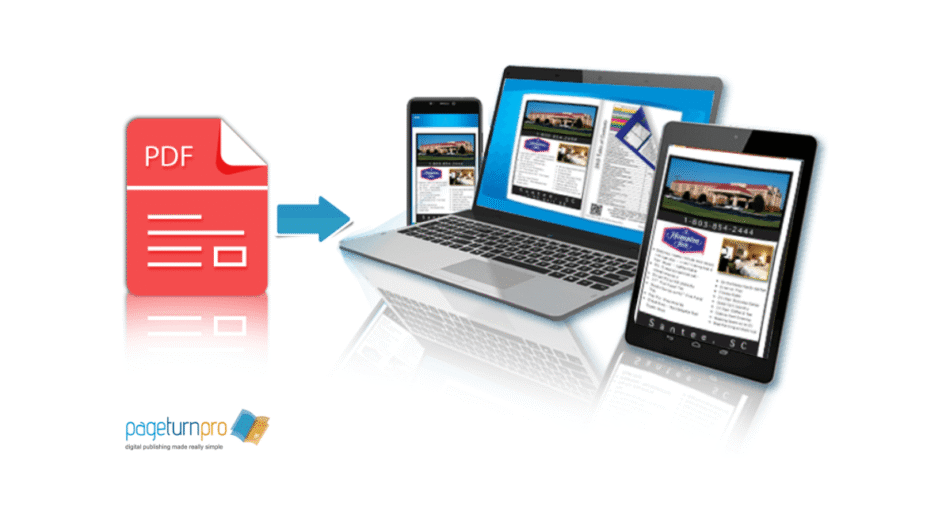Marketing has undergone a dramatic shift over the past two decades. While businesses once relied heavily on print advertisements, billboards, and direct mail campaigns, the digital revolution has fundamentally changed how companies reach their audiences. At the heart of this transformation lies e-publishing software i.e. a game-changing technology that has democratized content creation and distribution.
Electronic publishing software has enabled small and large businesses alike to produce professional-grade marketing materials without the usual costs, time, and technical constraints. Small startups to global corporations now possess the capability to create engaging digital content that resonates with customers and generates results. The movement has not only transformed what marketing is but also how companies approach their connection with their audience.
The Evolution of Business Marketing Materials
From Print to Digital: A Fundamental Shift
Traditional marketing materials required significant investment and lengthy production cycles. Creating a single brochure involved hiring designers, working with printing companies, and managing distribution logistics. The process could take weeks or months, and making changes meant starting over from scratch.
E-publishing software has done away with these bottlenecks altogether. Companies can now produce, revise, and disseminate marketing content on the fly. This speed has become paramount as market dynamics shift quickly and customer demands keep evolving.
Removing Creative Hurdles
Prior to the availability of e-publishing solutions, companies required expert design capabilities or costly agency alliances to produce competent marketing materials. Most companies compromised on plain, template-based designs that didn’t reflect their individual company persona.
New e-publishing technologies have disrupted this equation by providing easy-to-use drag-and-drop interfaces, pre-made templates, and advanced design tools that do not need coding skills. Marketing departments are now able to create visually appealing content that can compete with output from professional design firms.
Major Ways E-Publishing Programs Have Revolutionized Marketing
Interactive Content Creation
Static marketing collateral has been replaced by interactive experiences that engage people at various levels. Electronic publishing software allows companies to create:
- Interactive PDFs with hotspots and linked videos
- Shoppable digital catalogs that customers can explore and shop directly from
- Multimedia presentations that integrate text, images, audio, and video
- Responsive content that dynamically adjusts to various screen sizes and devices
This interactivity has been especially useful for sophisticated products or services that could use comprehensive descriptions or demonstrations.
Real-Time Content Updates
Among the greatest benefits of e-publishing software is that it allows one to update materials instantly. As product specifications are altered, prices are changed, or new features are introduced, marketing materials can be updated at once on all distribution channels.
With this function, companies have found it indispensable to function in rapidly moving sectors where information rapidly goes stale. Businesses can keep information correct and timely without incurring expense and wastage from reprinting materials.
Improved Analytics and Tracking
E-publishing platforms offer rich analytics that print materials could never. Companies can monitor:
- How many individuals read their content
- What sections are most popular
- Where readers stumble or lose interest
- Which calls-to-action have the strongest response
- Geographic location of their audience
This information allows ongoing optimization of marketing materials around real user behavior instead of guesswork.
Cost-Effective Distribution
Physical distribution networks, storage units, and shipping fees were all required by traditional marketing materials. E-publishing software has canceled these outlays while taking reach to exponential levels.
Digital marketing materials can be disseminated via:
- Email campaigns
- Social media sites
- Company websites
- Partner portals
- Mobile apps
- Cloud-based sharing portals
This multi-channel distribution ability guarantees marketing messages reach customers wherever they want to consume content.
The Emergence of Personalized Marketing
Personalized marketing is now within the reach of businesses regardless of size thanks to digital publishing software. Sophisticated platforms now provide:
- Dynamic content that adjusts according to user profiles
- Recommendations in marketing materials tailored to individual users
- Customized product catalogs according to various segments of customers
- Targeted messages according to user behavior and interests
Such a level of personalization was earlier a privilege only with large companies that had huge budgets for technology. Today, small companies too can develop highly targeted marketing materials that address the specific customer requirement.
Mobile-First Marketing Materials
The transition to mobile consumption has fueled demand for mobile-optimized marketing collateral. E-publishing applications have kept pace with the demand by providing:
- Responsive design features that scale down to fit any screen
- Touch-based navigation and interaction widgets
- Speed-optimized content optimized for mobile networks
- Offline reading for those who don’t always have internet access
Mobile optimization is now standard due to mobile devices becoming the primary means of digital content consumption.
Environmental and Sustainability Benefits
The move away from print to digital marketing materials has large environmental consequences. E-publishing technology has assisted organizations in:
- Lowering paper use and waste
- Removing transportation emissions from physical delivery
- Reducing storage needs for marketing materials
- Enabling corporate sustainability initiatives
Several organizations now emphasize their digital-first strategy as a component of their environmental responsibility initiatives.
Conclusion
The evolution of business marketing via e-publishing software is not merely a technological change, it’s a core paradigm shift in business-to-business communication. Businesses that have adopted such software tools have achieved tremendous leaps in terms of flexibility, affordability, and customer interaction.
As electronic publishing software develops, companies that are aware of these advances will be in the best position to ensure they continue to stay ahead of the competition. Marketing’s future is with companies that are able to design engaging, personal, and accessible digital experiences that better meet their customers’ needs.
One great e-publishing software program is PageTurnPro e-publishing software. Get its 15-day free trial today!









